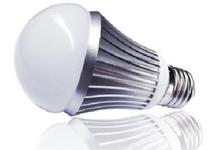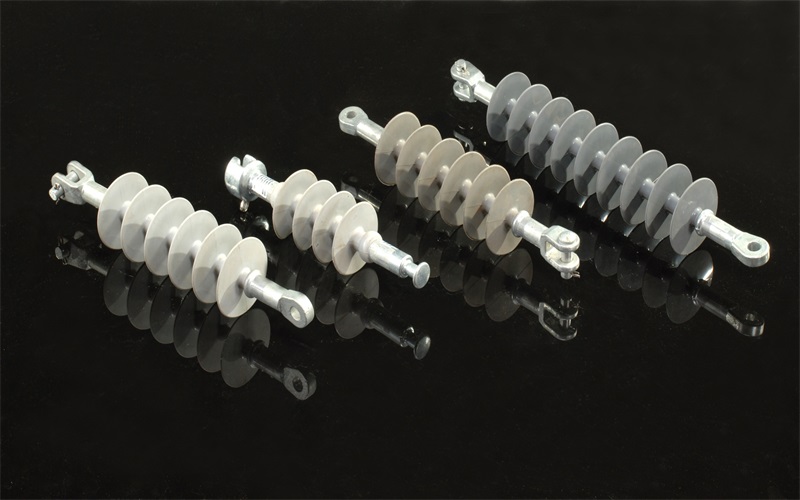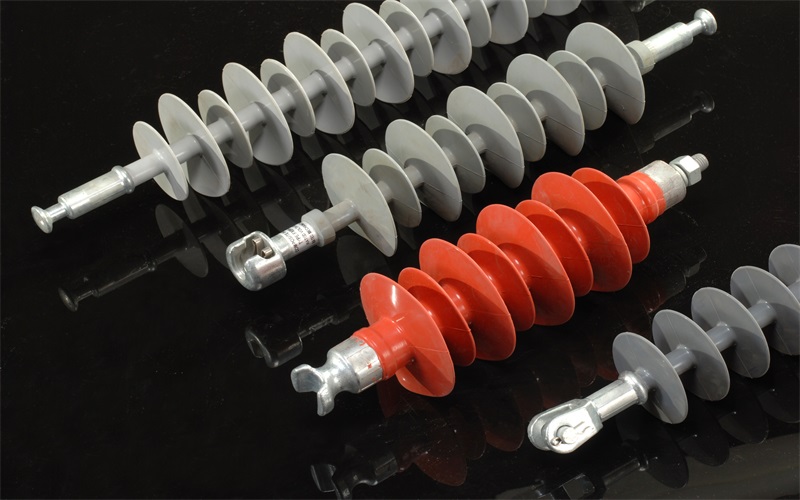 Semiconductor lighting based on nitride LEDs has achieved remarkable results after more than a decade of development. "Quantitative change to qualitative change", from technology to market, semiconductor lighting has accumulated a certain amount of power, to go further, need to see far enough to grasp the direction and trends. So, the development of the semiconductor lighting industry has entered a stage of development, what are the trends and characteristics? In this issue, we interviewed experts from the field of materials, academicians of the Chinese Academy of Sciences, and Professor of Physics of Nanjing University, Zheng Youyi, on the development and trend of current semiconductor lighting. He has long devoted himself to the research of new semiconductor heterostructure materials and device physics, and he has also been paying attention to it. The development of semiconductor lighting industry. According to Academician Zheng Youyi, semiconductor lighting will gradually enter the stage of development driven by light quality from the light effect, and then develop LED intelligent lighting, give full play to the advantages of semiconductor lighting, and create a new era of lighting digitalization.
Semiconductor lighting based on nitride LEDs has achieved remarkable results after more than a decade of development. "Quantitative change to qualitative change", from technology to market, semiconductor lighting has accumulated a certain amount of power, to go further, need to see far enough to grasp the direction and trends. So, the development of the semiconductor lighting industry has entered a stage of development, what are the trends and characteristics? In this issue, we interviewed experts from the field of materials, academicians of the Chinese Academy of Sciences, and Professor of Physics of Nanjing University, Zheng Youyi, on the development and trend of current semiconductor lighting. He has long devoted himself to the research of new semiconductor heterostructure materials and device physics, and he has also been paying attention to it. The development of semiconductor lighting industry. According to Academician Zheng Youyi, semiconductor lighting will gradually enter the stage of development driven by light quality from the light effect, and then develop LED intelligent lighting, give full play to the advantages of semiconductor lighting, and create a new era of lighting digitalization. Semiconductor lighting will enter a new stage of orderly and rapid development
For more than a decade, the semiconductor lighting industry has gone through several development stages. Through gradual transformation and integration, it will enter a new stage of orderly and rapid development. In previous years, with the light efficiency as a driving force, the high-efficiency light-emitting technology of nitride LED chips has been greatly developed and matured. At present, the LED chip light efficiency has reached a very high level, the price decline is also rapid, the proportion of the cost of LED lighting products in the declining, the importance of semiconductor lighting technology is increasingly recognized, LED lighting is the development trend of the entire lighting, Will lead the transformation of traditional lighting industry. At present, the proportion of semiconductor lighting in the entire lighting industry is still not very large. It is still in the early stages of development and there is still a long way to go.
LED lighting is different from the previous light sources, and LED lighting should have higher requirements than ever before, such as higher light quality, humanization, and satisfying people's safety, physiology, and psychological feelings, and meeting these requirements is not an easy one. There is still a lot of work to do. Therefore, semiconductor lighting technology will continue to improve light efficiency, will enter the new development stage driven by light quality to meet the needs of applications.
Challenge <br> <br> semiconductor lighting humane, cost and intelligent lighting technology is the next generation light source multi-technology integration, a nitride light-emitting LED chip, the phosphor by the excitation light, light transmission and light extraction High-efficiency integration of many technologies such as electric drives. Although these technologies have made great progress and promote the vigorous development of semiconductor lighting as a strategic emerging industry, there is still much room for improvement and the technology needs continuous development. At present, the development of semiconductor lighting is facing many challenges, summed up in three main areas: First, to improve the quality of light to achieve personalized lighting; Second, low-cost lighting; Third, intelligent lighting, so that semiconductor lighting, high-efficiency, green, intelligent features fully reflect.
Semiconductor lighting must become a daily necessities for people, must be cheap, quality, reduce costs is the pursuit of the goal. The proportion of LED chips in the cost of semiconductor lighting products has been high for a long time. Due to the advances in LED technology in recent years, the price of chips has dropped significantly. However, semiconductor lighting products are not only a lighting system but also cost Depending on the LED chip, it also includes lighting system components, component costs. Therefore, the importance of reducing the cost of lighting system components and components has become increasingly prominent.
Current semiconductor lighting technology is advancing rapidly. In terms of substrate materials, sapphire is currently relatively mature and low-cost in terms of substrate materials used in LEDs, and is currently developing in the direction of 6 inches. Silicon carbide is known for its high price and is mainly used in high-end chip products. Crystalline silicon has the advantage of being inexpensive, but compared with sapphire, the epitaxial nitride technology on silicon still needs further development. Which kind of substrate is used must be based on the application requirements, and it should be weighed in terms of technology maturity, product yield, and price. At present, the technology for epitaxial growth of nitrides on sapphire substrates is relatively mature, the yield of manufactured LED chips is high, and the price of sapphire substrates is continuously declining, and the size of wafers is continuously increasing. Therefore, the sapphire substrate is still the current mainstream of LED epitaxy. The bottom material.
Semiconductor lighting intelligence is another important goal that must be pursued after achieving high energy efficiency. Intelligent lighting will give full play to the scientific advantages of LED electron-hole composite physical luminescence mechanism, lead the realization of lighting digital era, and further realize the second energy-saving function, which is the development direction of LED lighting. The intelligentization of semiconductor lighting requires the support of microelectronics technology, and more companies and technical forces are required to participate in the integration of microelectronics technology, sensing technology and LED lighting technology, thus also stimulating the development of microelectronics technology and sensing technology industry.
On the other hand, the International Convention on Prevention and Control of Mercury Pollution on January 19, 2013 was issued. Governments of all countries agreed to ban the production and trade of a series of mercury-containing products by 2020, including batteries, switches, and energy-saving lamps containing mercury. , soap and cosmetics. At the same time, mercury thermometers and blood pressure monitors should be gradually replaced by 2020. This brings new opportunities for the development of LED lighting industry, and more powerfully promote the development of LED lighting. Therefore, from the perspective of industry, the application will become the driving force behind the development of the LED lighting industry. The research and development of lighting terminal products will develop strongly and lead the transformation of the traditional lighting industry.
Quantity changes to qualitative change, from technology to market, semiconductor lighting has accumulated a certain amount of strength, to go further, need to look far enough to grasp the direction and trends. So, so far, the development of semiconductor lighting industry has entered what kind of development What are the trends and characteristics at this stage? In this issue, we interviewed experts from the field of materials, academicians of the Chinese Academy of Sciences, and professor of the Physics Department of Nanjing University, Zheng Youyi, in this issue. He has long been committed to new semiconductor heterostructures. Material and device physics research has also been concerned about the development of the semiconductor lighting industry.In view of academician Zheng Youxuan, semiconductor lighting will gradually enter the stage of development driven by light quality from the light effect, and then develop LED intelligent lighting, give full play to the semiconductor lighting Advantages, creating a new era of digital lighting.
Semiconductor lighting will enter a new stage of rapid development and orderly <br> <br> more than a decade, the semiconductor lighting industry through the development process a few times up and down, through the gradual transformation, integration will enter a new stage of rapid and orderly development. In previous years, with the light efficiency as a driving force, the high-efficiency light-emitting technology of nitride LED chips has been greatly developed and matured. At present, the LED chip light efficiency has reached a very high level, the price decline is also rapid, the proportion of the cost of LED lighting products in the declining, the importance of semiconductor lighting technology is increasingly recognized, LED lighting is the development trend of the entire lighting, Will lead the transformation of traditional lighting industry. At present, the proportion of semiconductor lighting in the entire lighting industry is still not very large. It is still in the early stages of development and there is still a long way to go.
LED lighting is different from the previous light sources, and LED lighting should have higher requirements than ever before, such as higher light quality, humanization, and satisfying people's safety, physiology, and psychological feelings, and meeting these requirements is not an easy one. There is still a lot of work to do. Therefore, semiconductor lighting technology will continue to improve light efficiency, will enter the new development stage driven by light quality to meet the needs of applications.
Challenge <br> <br> semiconductor lighting humane, cost and intelligent lighting technology is the next generation light source multi-technology integration, a nitride light-emitting LED chip, the phosphor by the excitation light, light transmission and light extraction High-efficiency integration of many technologies such as electric drives. Although these technologies have made great progress and promote the vigorous development of semiconductor lighting as a strategic emerging industry, there is still much room for improvement and the technology needs continuous development. At present, the development of semiconductor lighting is facing many challenges, summed up in three main areas: First, to improve the quality of light to achieve personalized lighting; Second, low-cost lighting; Third, intelligent lighting, so that semiconductor lighting, high-efficiency, green, intelligent features fully reflect.
Semiconductor lighting must become a daily necessities for people, must be cheap, quality, reduce costs is the pursuit of the goal. The proportion of LED chips in the cost of semiconductor lighting products has been high for a long time. Due to the advances in LED technology in recent years, the price of chips has dropped significantly. However, semiconductor lighting products are not only a lighting system but also cost Depending on the LED chip, it also includes lighting system components, component costs. Therefore, the importance of reducing the cost of lighting system components and components has become increasingly prominent.
Current semiconductor lighting technology is advancing rapidly. In terms of substrate materials, sapphire is currently relatively mature and low-cost in terms of substrate materials used in LEDs, and is currently developing in the direction of 6 inches. Silicon carbide is known for its high price and is mainly used in high-end chip products. Crystalline silicon has the advantage of being inexpensive, but compared with sapphire, the epitaxial nitride technology on silicon still needs further development. Which kind of substrate is used must be based on the application requirements, and it should be weighed in terms of technology maturity, product yield, and price. At present, the technology for epitaxial growth of nitrides on sapphire substrates is relatively mature, the yield of manufactured LED chips is high, and the price of sapphire substrates is continuously declining, and the size of wafers is continuously increasing. Therefore, the sapphire substrate is still the current mainstream of LED epitaxy. The bottom material.
Semiconductor lighting intelligence is another important goal that must be pursued after achieving high energy efficiency. Intelligent lighting will give full play to the scientific advantages of LED electron-hole composite physical luminescence mechanism, lead the realization of lighting digital era, and further realize the second energy-saving function, which is the development direction of LED lighting. The intelligentization of semiconductor lighting requires the support of microelectronics technology, and more companies and technical forces are required to participate in the integration of microelectronics technology, sensing technology and LED lighting technology, thus also stimulating the development of microelectronics technology and sensing technology industry.
On the other hand, the International Convention on Prevention and Control of Mercury Pollution on January 19, 2013 was issued. Governments of all countries agreed to ban the production and trade of a series of mercury-containing products by 2020, including batteries, switches, and energy-saving lamps containing mercury. , soap and cosmetics. At the same time, mercury thermometers and blood pressure monitors should be gradually replaced by 2020. This brings new opportunities for the development of LED lighting industry, and more powerfully promote the development of LED lighting. Therefore, from the perspective of industry, the application will become the driving force behind the development of the LED lighting industry. The research and development of lighting terminal products will develop strongly and lead the transformation of the traditional lighting industry.
Composite Insulator is an electrical device consisting of insulation section made of polymer materials and metal fittings, Silicone rubber is the most widely used polymeric insulation material for high voltage products. Composite polymer insulator can play an important role in overhead transmission lines. Electric composite insulator can be divided into: Suspension Composite Insulator,Composite Long Rod Insulator, Pin Type Composite Insulator and Line Post Composite Insulator.
As the replacement of porcelain insulators, silicone rubber composite insulators have many advantages:
1.Low costs (or no necessity at all) for Insulators cleaning2.No need of zero value check, suitable for difficult maintenance area
3.Light weight, easy and economical to transportation and installation
4.Not brittle, and reduce the purchasing quantities for spare parts


We warmly welcome friends both domestic and abroad to visit our company, if you have any questions, please contact with us directly.
Composite Insulator
Composite Insulator,Composite Polymer Insulator,Composite Long Rod Insulator,Electric Composite Insulator
FUZHOU SINGREE IMP.& EXP.CO.,LTD. , https://www.cninsulators.com